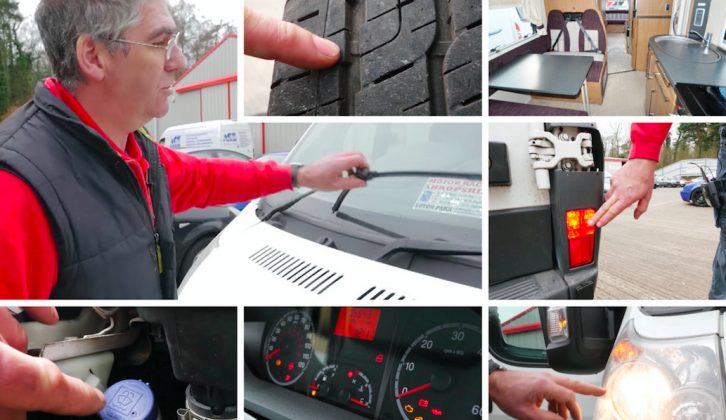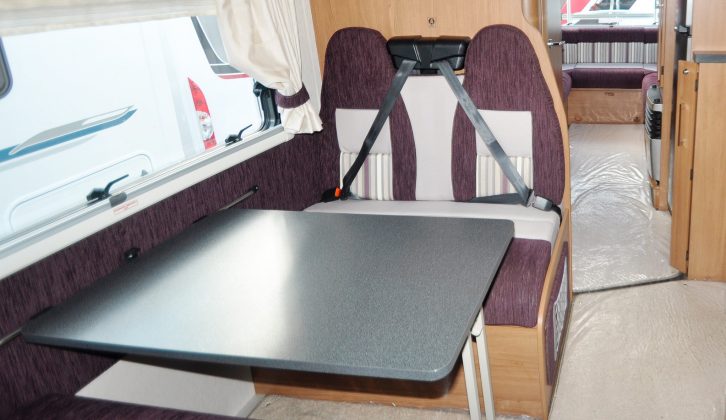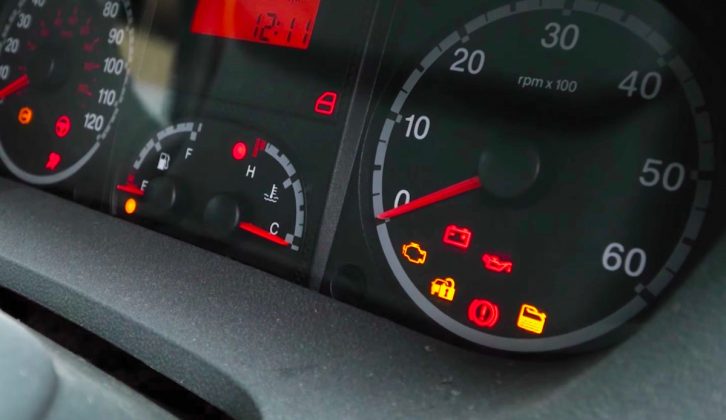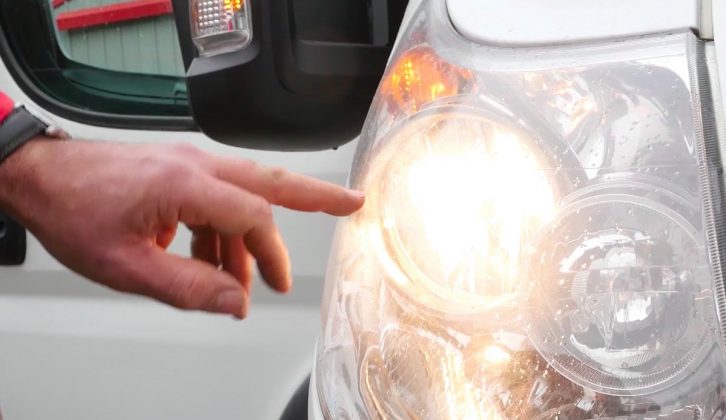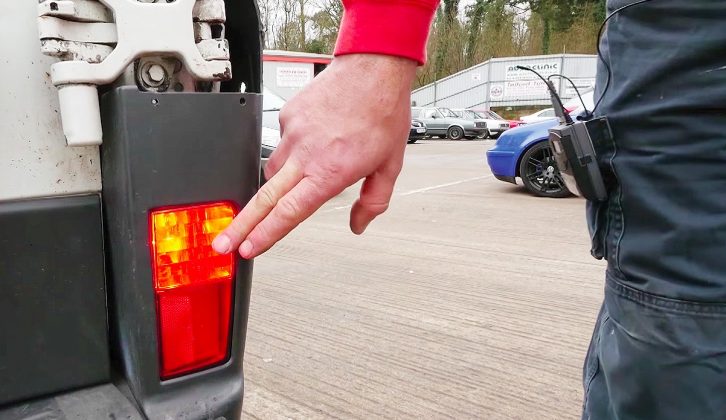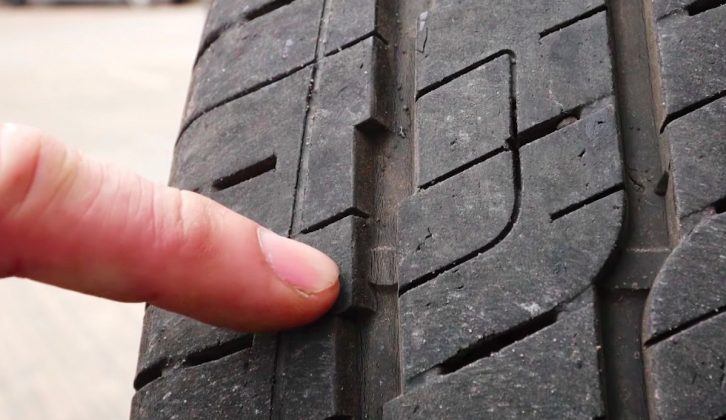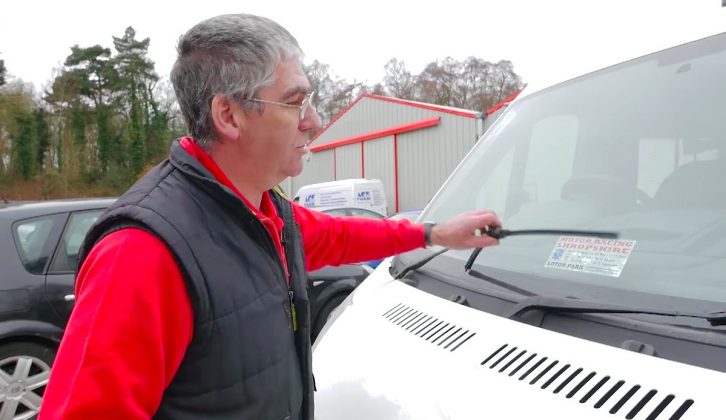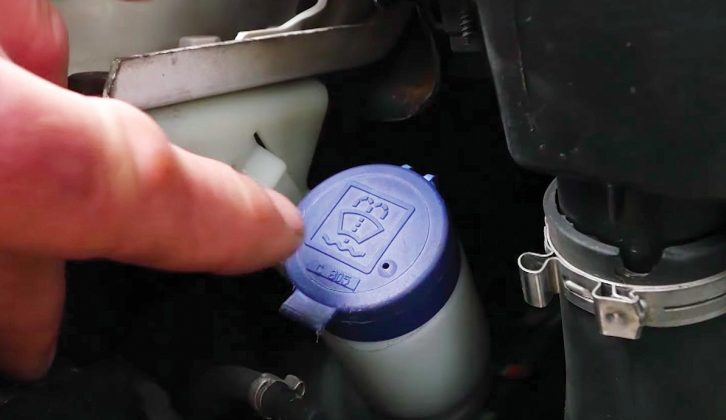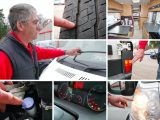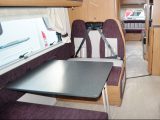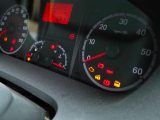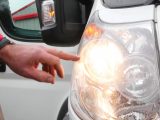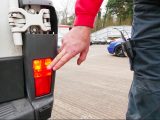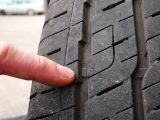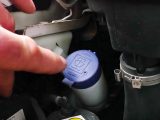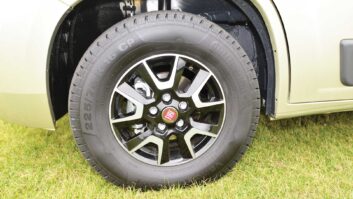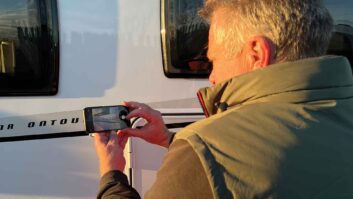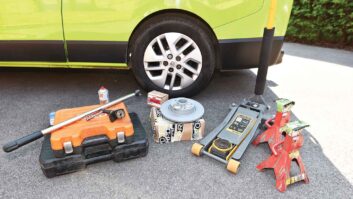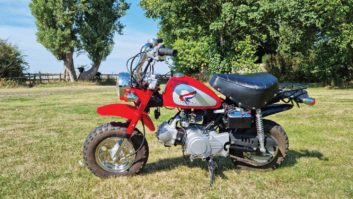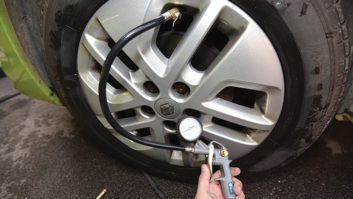MoT time strikes fear into the hearts of many, even those motorhome owners who are diligent about keeping their ’van in tip-top condition. But it shouldn’t.
It’s a relatively simple test of roadworthiness that checks items such as the seatbelts, tyres, brakes, washers and wipers, the body and chassis for corrosion, exhaust emissions and the road lights.
While it’s not within the ability of most owners to test brakes and examine the underbody for corrosion, many of the other items are easily checked – in fact, most should be regularly looked at by the driver/owner anyway.
Start simple
So it’s time to take a look over your motorhome prior to its MoT – let’s start with the simple bits.
Do all the road lights work? The MoT test covers the side lights (now referred to ‘position lamps’ for some obscure reason), the headlights (both dipped and main beam), the indicators, the brake lights and the rear fog light.
Take a walk around the vehicle and check them all – it only takes a few moments. Rear fog lights are compulsory and, if only one is fitted, it must be either on the vehicle’s centre line or the offside (which is the driver’s side in the UK).
I recently had a Chausson motorhome come into the workshop for an MoT and service, and it failed because the single fog light was on the nearside. Thankfully, Chausson saw fit to position the reversing light and fog light equidistant from the centre line, and provide wiring for both functions at each position, so it was a simple, five-minute swap to correct it.
Headlight aim needs to be correct, too. And although most of us won’t have access to an MoT-standard beam tester, we can easily carry out a basic check.
Simply park in front of a wall or garage door at dusk, put the headlights on dipped beam and have a look at the pattern on the wall. It should have a horizontal top line that’s no higher than the centre line of the lights themselves, and kick up to the UK nearside from the centre of the beam.
If the kick up is to the right, you have Continental headlights and you will need to fit beam benders to correct the pattern.
Reversing lights are not part of the MoT test. However, these should work!
Can you see where you’re going?!
Windscreen washers and wipers are next. The former need to spray a sufficient amount of fluid onto the screen in the appropriate places to clean it.
Check that there is some fluid in the reservoir and that it squirts onto the windscreen – it’s very annoying to get a fail for an empty washer reservoir.
Your motorhome’s windscreen wipers need to be in good condition, without splits or tears in the rubber blades. And they need to clear the screen without smearing it.
Moving on to the inside of the ’van, the seats need to be securely mounted and so do the seatbelts.
Damage to the belts could be a reason for failure, so inspect them carefully, bearing in mind that rear seatbelts (where fitted) are now also checked – so give them a look over even if you don’t use them.
While you’re in the cab, check that the warning lights on the dashboard go out once the engine is started. ABS or airbag warning lamps staying lit will result in a failure.
Don’t get tyred out
Back outside, it’s time to look at the tyres. Tyre age is not a reason for failure, but condition is.
Check for cracking and crazing of sidewalls and in the tread grooves. While a crack has to reveal the cord structure of the tyre before it will fail the test, I always ask one question when looking at a cracked or crazed tyre: will it get better if you do nothing? If the answer is no (which it always is), the tyre needs replacing.
Also check for tread wear: the minimum legal requirement is 1.6mm, and the tyre will have a ‘wear marker bar’ at intervals around the circumference. If the surface is level with this marker it’s a fail. The tyre also has to have tread across its full width.
Tyres have a date code on one sidewall, which takes the form of a four-digit number at the end of what is usually referred to as the ‘DOT code’.
For tyres made between 1 January 1990 and 31 December 1999, it will be a three-digit code: the first two digits are the week of the year, and the third digit is the year of the decade – so 297 would be week 29 of 1997. If you find a three-digit date code, the tyre definitely needs replacing.
From 1 January 2000, the date code takes a four-digit form, where the first two digits are the week of the year and the second two are the year – so 4212 would be week 42 of 2012.
Any tyre over six years old is probably past its best and needs replacing – this applies to the spare, too.
It’s also worth checking your tyre pressures. Although these are not part of the MoT, if a tyre is obviously low on pressure the test could be cancelled.
Take a brake
As far as the brakes go, there is little that owners can check other than the fluid level. If you have access to a private road, though, you can perform a basic test for brake balance.
Drive at a slow speed on a level road, then release the wheel and brake smoothly but firmly. If the vehicle doesn’t stop in a straight line, there’s a balance issue that needs to be looked at (this is also a good way of finding out whether everything inside is safely stowed).
These are all checks we should carry out on all our vehicles on a regular basis, of course – especially the tyres, washers, wipers and lights.
It literally takes five minutes to look at these basic items – but you could add five more and check your engine oil and coolant levels, too.
A keen motorcaravanner, Practical Motorhome’s technical expert Diamond Dave runs his own leisure vehicle workshop. Find out more at Dave Newell Leisure Vehicle Services.
These are all checks we should carry out on all our vehicles on a regular basis
